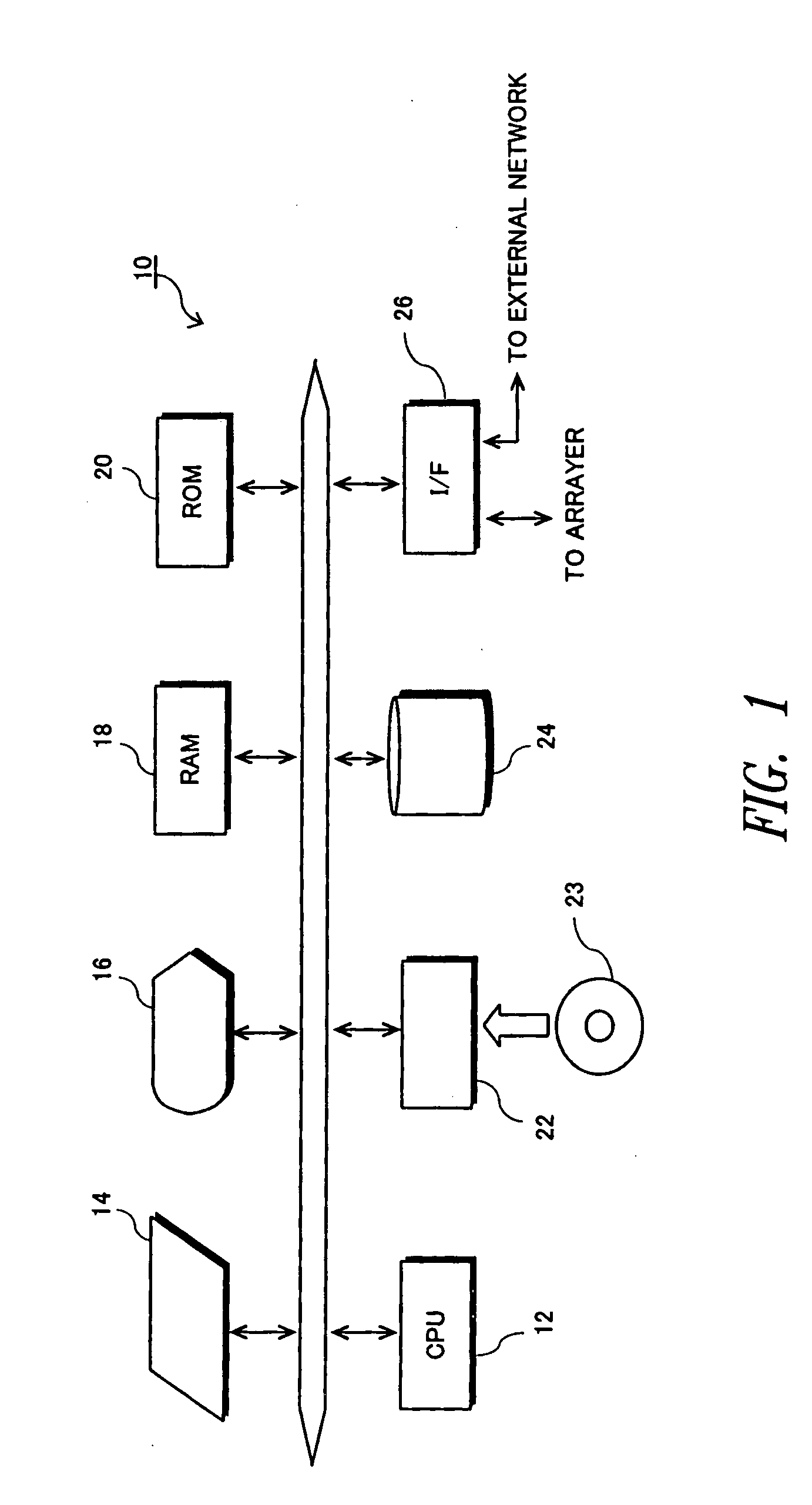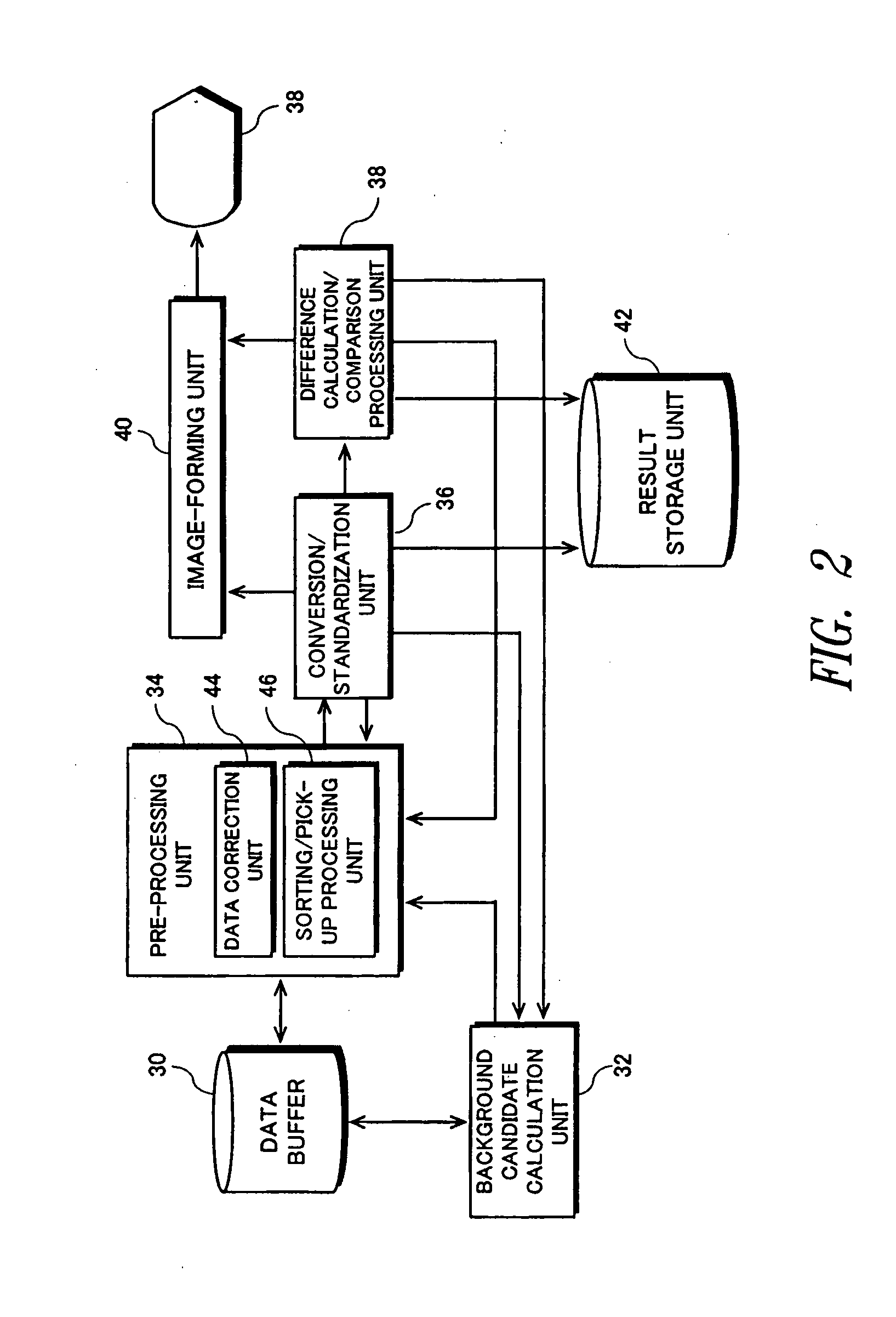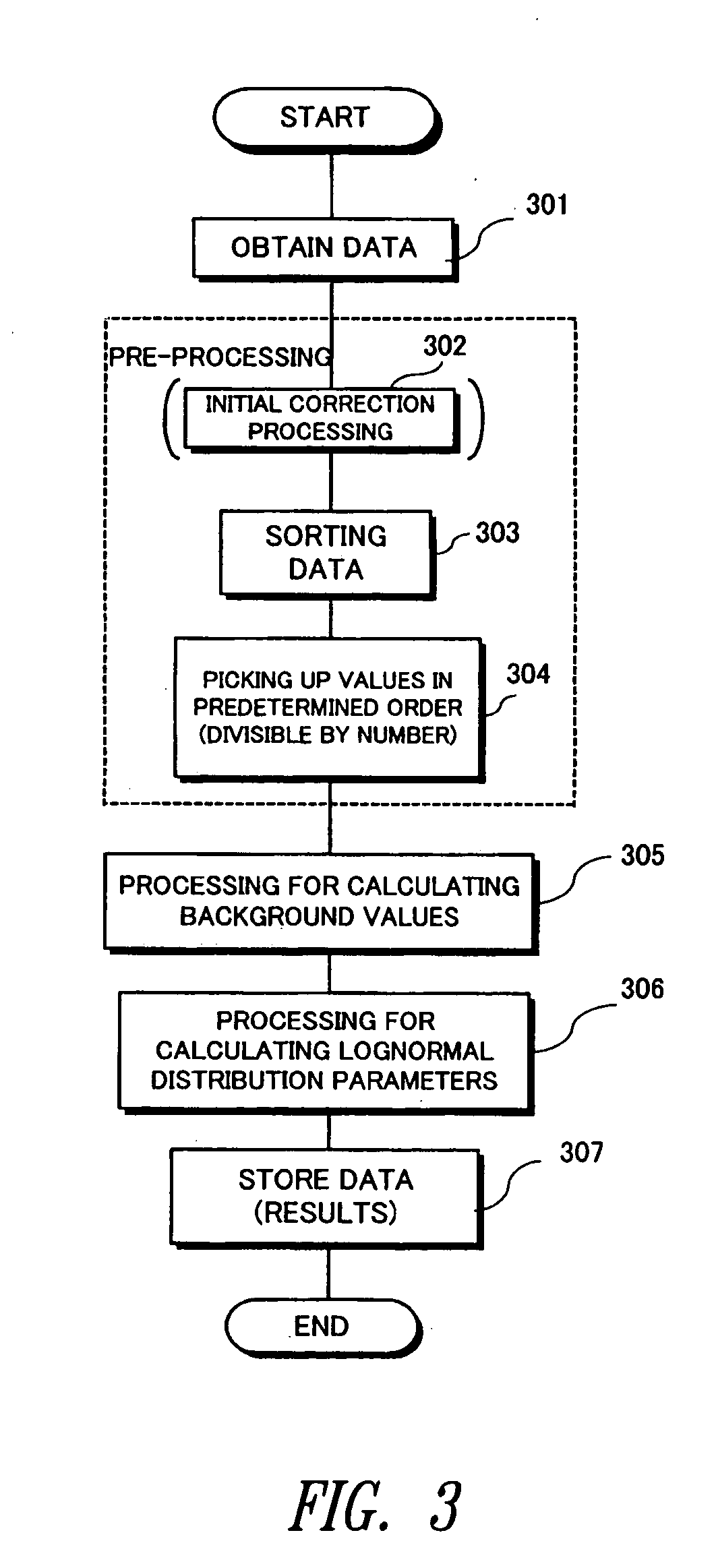Method of processing gene expression data and processing program
- Summary
- Abstract
- Description
- Claims
- Application Information
AI Technical Summary
Benefits of technology
Problems solved by technology
Method used
Image
Examples
first embodiment
[0141] Embodiments of the invention will now be described with reference to the accompanying drawings. FIG. 1 is a diagram illustrating the hardware constitution of an analyzer according to the present invention. Referring to FIG. 1, the analyzer 10 includes a CPU 12, an input unit 14 such as a mouse or a keyboard, a display unit 16 constituted by a CRT, a RAM (random access memory) 18, a ROM (read only memory) 20, a portable storage medium driver 22 accessible by a portable storage medium 23 such as CD-ROM or DVD-ROM, a hard disk unit 24, and an interface (I / F) 26 for controlling the exchange of data relative to the external unit. As will be comprehended from FIG. 1, a personal computer or the like can be used as the analyzer 10 of the embodiment.
[0142] The I / F 26 is connected to a reader or a scanner (not shown) that measures the amount of light emitted by a spot on the hybridized DNA chip and forms the data based on the measured amount of emitted light, and is further connected t...
third embodiment
[0188] From a combination of a chip and a sample, therefore, if a normal logarithmic distribution can be expected without noise, then, the values can be obtained by the following method. FIG. 10 is a flowchart illustrating the processing according to the
[0189] According to the third embodiment as shown in FIG. 10, the original data of the DNA chip are obtained from the data buffer 30 (step 1001) and are sorted and rearranged in order of increasing values or decreasing values (step 1002). The sorted data, too, are stored in the data buffer 30. Then, ideal values Zi (i=1, 2, - - - ) of normal logarithmic distribution are assigned to the sorted data values (step 1003). The ideal values Zi can be calculated by nearly the same method as the one for calculating the standard values of the first embodiment (see step 403). If briefly described here, again, m(i) is, first, calculated as follows:
m(i)=(i−0.3175) / (n+0.365)
where n is the number of data items, and i is a natural number of from 1 ...
PUM
 Login to View More
Login to View More Abstract
Description
Claims
Application Information
 Login to View More
Login to View More - R&D
- Intellectual Property
- Life Sciences
- Materials
- Tech Scout
- Unparalleled Data Quality
- Higher Quality Content
- 60% Fewer Hallucinations
Browse by: Latest US Patents, China's latest patents, Technical Efficacy Thesaurus, Application Domain, Technology Topic, Popular Technical Reports.
© 2025 PatSnap. All rights reserved.Legal|Privacy policy|Modern Slavery Act Transparency Statement|Sitemap|About US| Contact US: help@patsnap.com



